
It was an early morning with all of our alarms set before 6:00am so we would have time for breakfast before meeting up with our excursion group at 7:15 AM. The plan for today was a tour of the city of Sorrento and the ruins of Pompeii.
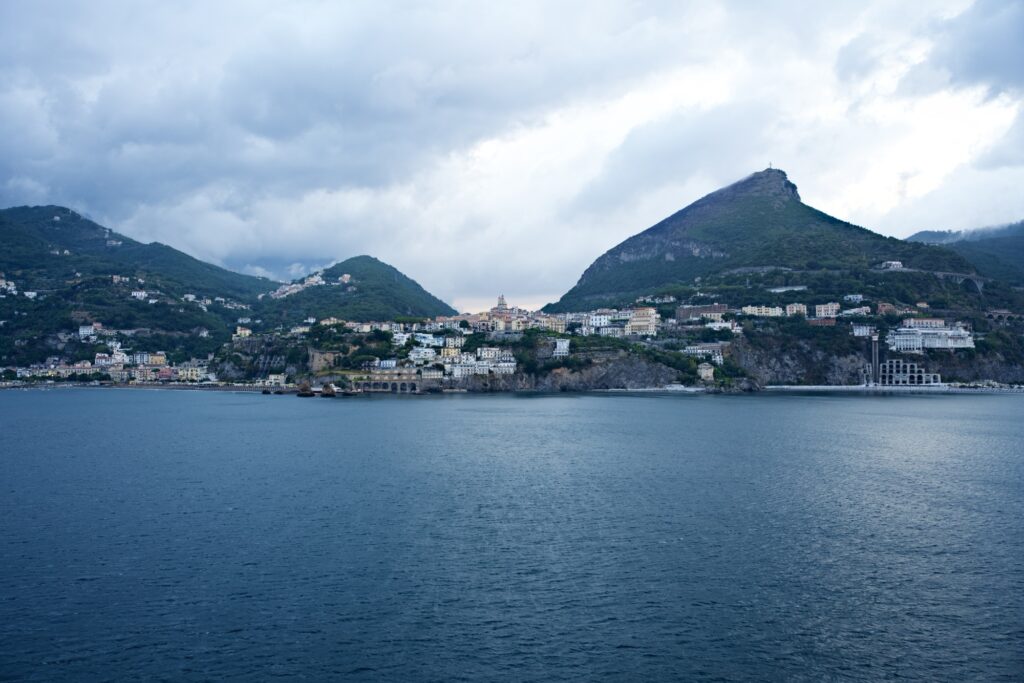
When we awoke, we were sailing into our port for the day at Solerno, and it was cloudy and a bit drizzly. I took pictures of the stunning Amalfi Coast from our balcony while everyone was getting ready.
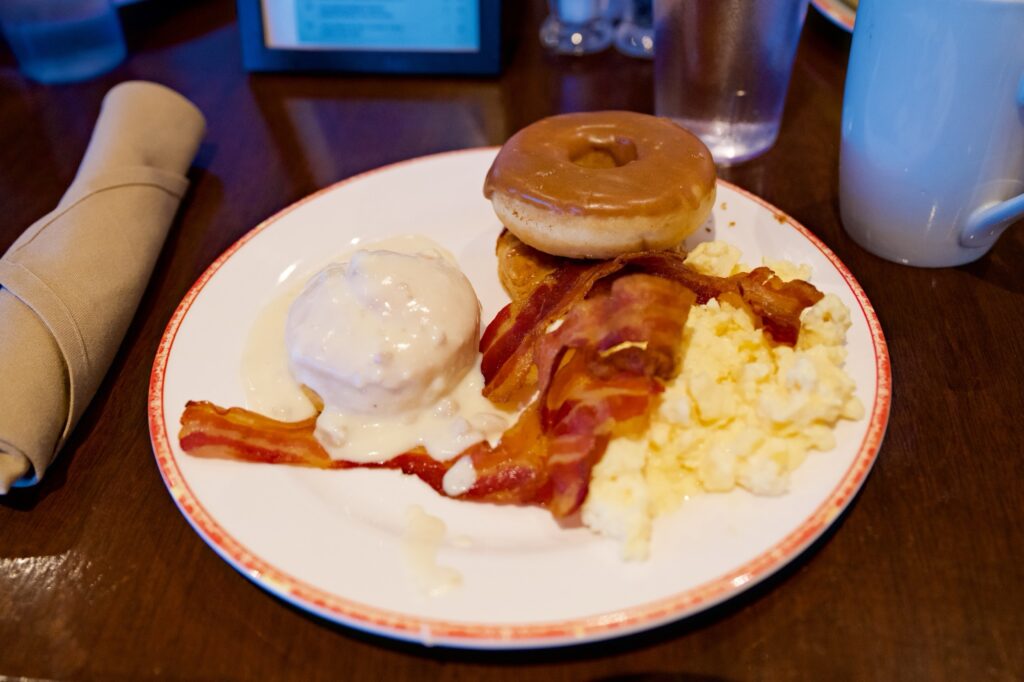
Breakfast was the buffet in the Windjammer Marketplace as the Main Dining Room did not open until 7:30 AM. It was a good meal, and I especially liked the caramel donut that I tried (I might have had two).
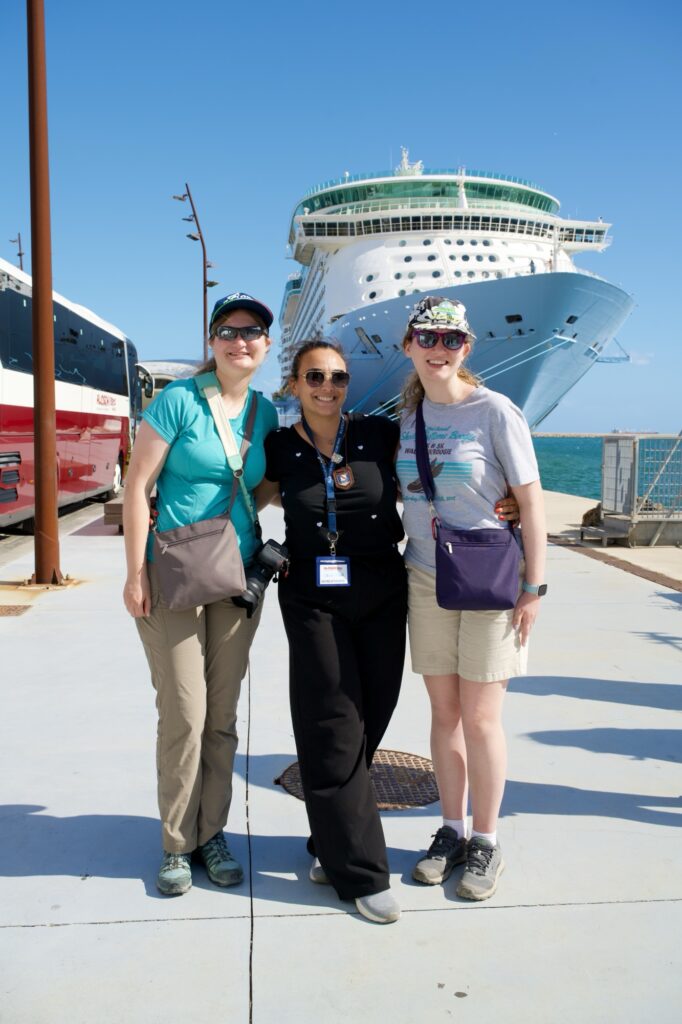
For our tour, we met in the Royal Theater on deck three and were divided into groups. Our group was 18, and we ended up on a bus with Valentina, who was our guide for the day. Our driver was Pasquale, who did a great job driving us to Sorrento and back.
We boarded our bus around 7:45 AM and began the 1.5 hour drive from Salerno to Sorrento. As we started, Valentina explained that Salerno was part of the Amalfi Coast and the second biggest town of Campania region.
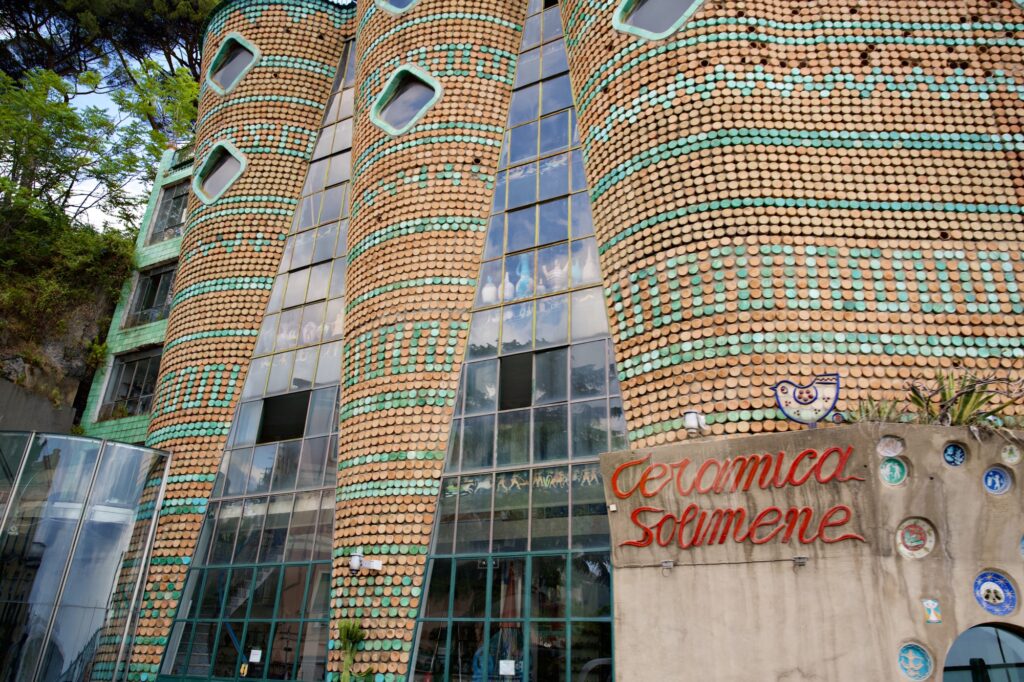
As we left Salerno, we passed through Vietri sul Mare, which is known for making ceramics. We passed a ceramics factory where the outside of the building was completely covered in ceramics.
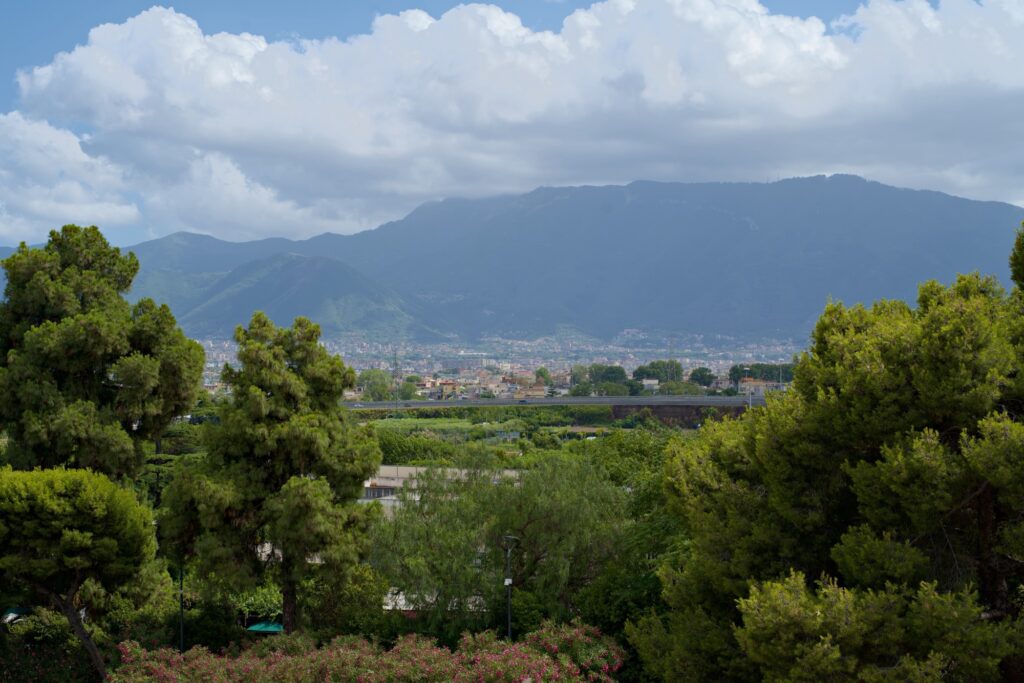
Very soon we caught our first glimpse of Mount Vesuvius and the Milky Mountains. Valentina explained that the Milky Mountains got their name because this is where they produce milk for mozzarella and other cheeses. These mountains are stunning and very much remind me of Kauai and the southern end of Oahu in Hawaii. We had a brief shower while driving through this region, but it ended quickly, and we ended up with perfect weather for most of the day. The highs were in the low 80s with a fair amount of cloud cover and a breeze. So much better than the sweltering conditions in Rome.
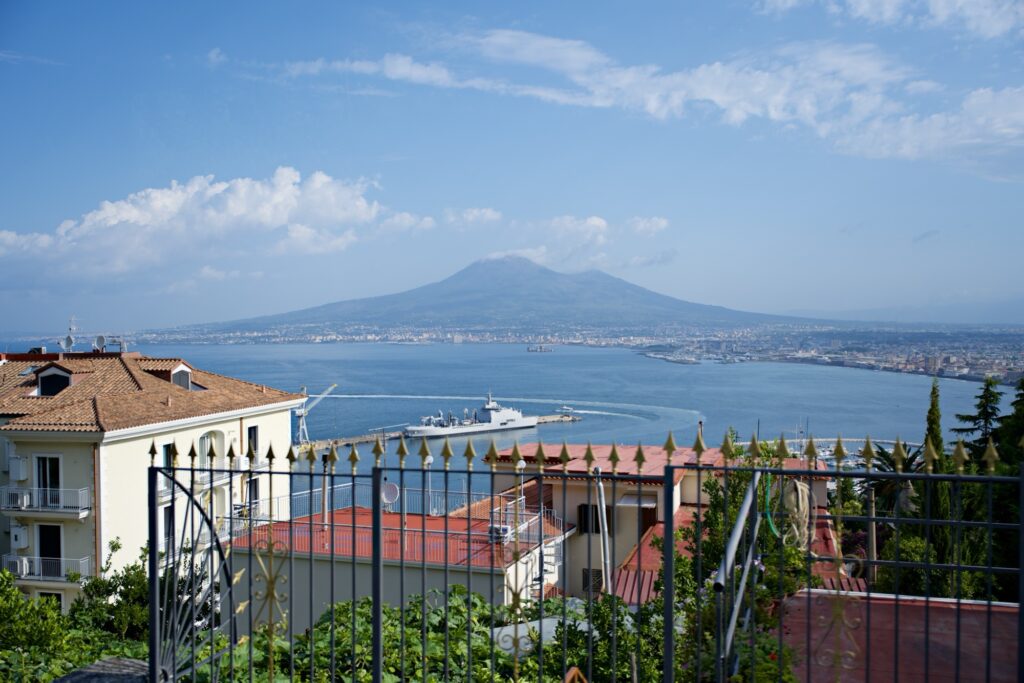
As we passed by Mount Vesuvius, Valentina pointed out its twin peaks. We caught a beautiful view of Vesuvius behind the Bay of Napoli. Valentina noted that the eruption in 79 AD, which wiped out Pompeii, was the first known eruption of this volcano. The last eruption was in 1944, though that one was very small. It is still considered to be active, though Valentina described it as “sleeping”. Even though we were scheduled to tour the ruins of Pompeii nearby, Valentina told us that we would stop on the way back from Sorrento in the afternoon.
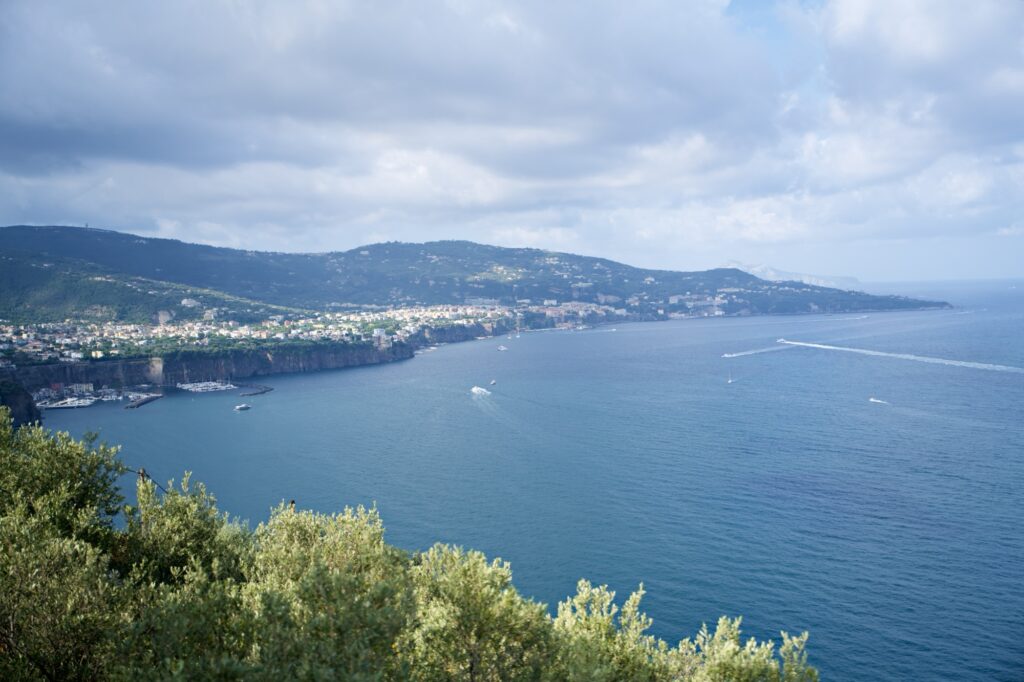
Once we got closer to Sorrento, we got an incredible view of the Sorrento Coast. We saw lots of olive trees along the road, and Valentina told us that this area was known for their olive oil and lemons. Almost everything in Sorrento was lemon themed.
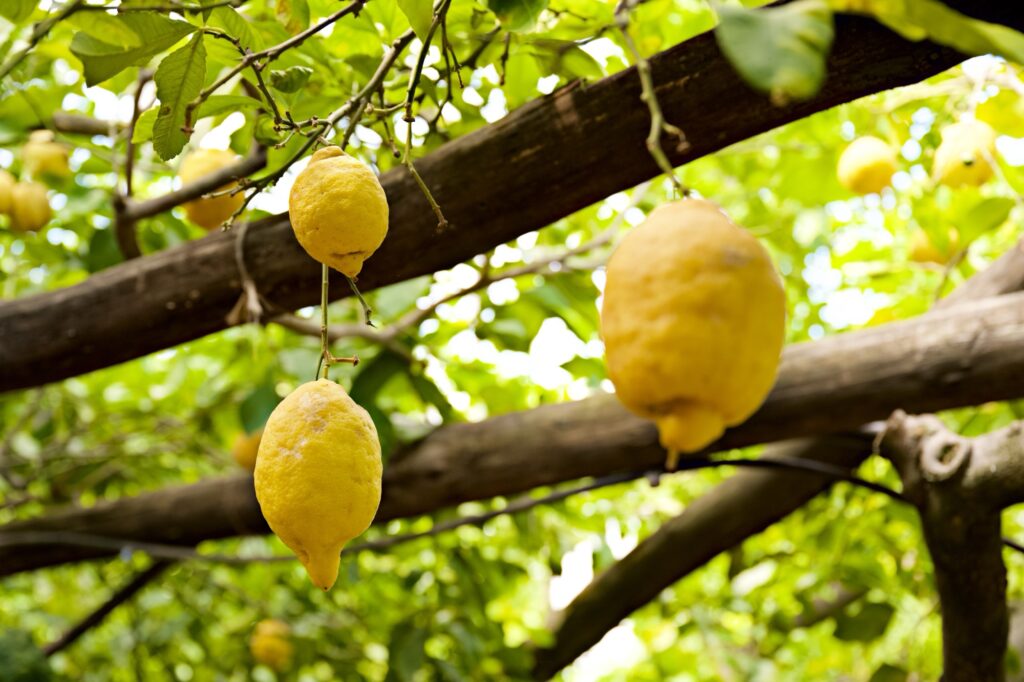
In Sorrento (we arrived around 9:30am), our first stop was at I Gardini Di Cataldo to visit their lemon grove and see a demonstration on making mozzarella. The lemon grove was quite beautiful with lemons and lots of flowers.
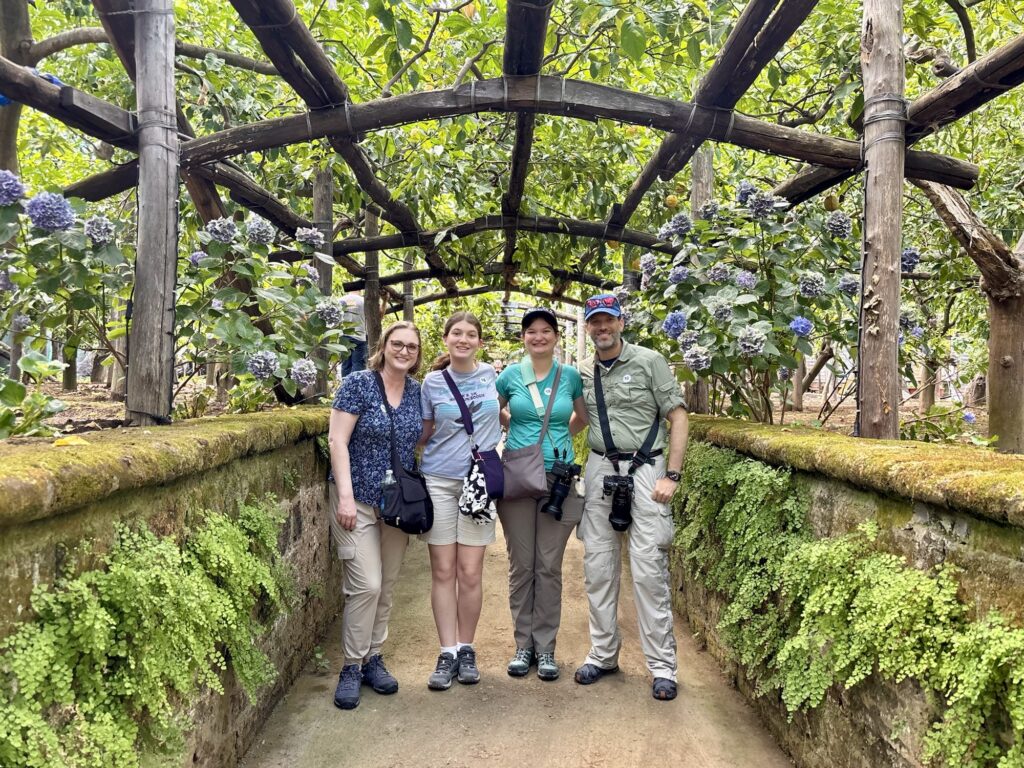
I let Kate bring one of my “professional” cameras on this trip and she spent quite a bit of time taking shots of lemons and flowers in the grove. She is a creative photographer with a good eye.
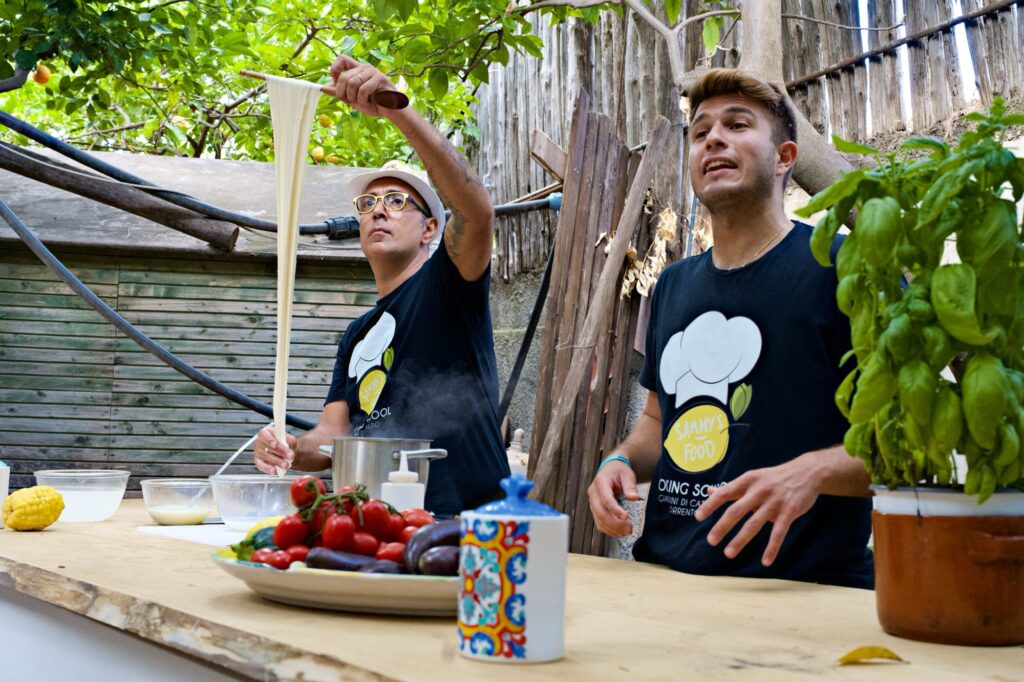
After walking through the grove, chef Sammy showed us how to make mozzarella. The ingredients are water, milk, salt, and rennet (enzyme that helps coagulate the milk, separating it into curds and whey). The process to make the curds takes 18 hours, so Sammy started with the curds and then showed us the rest of the process.
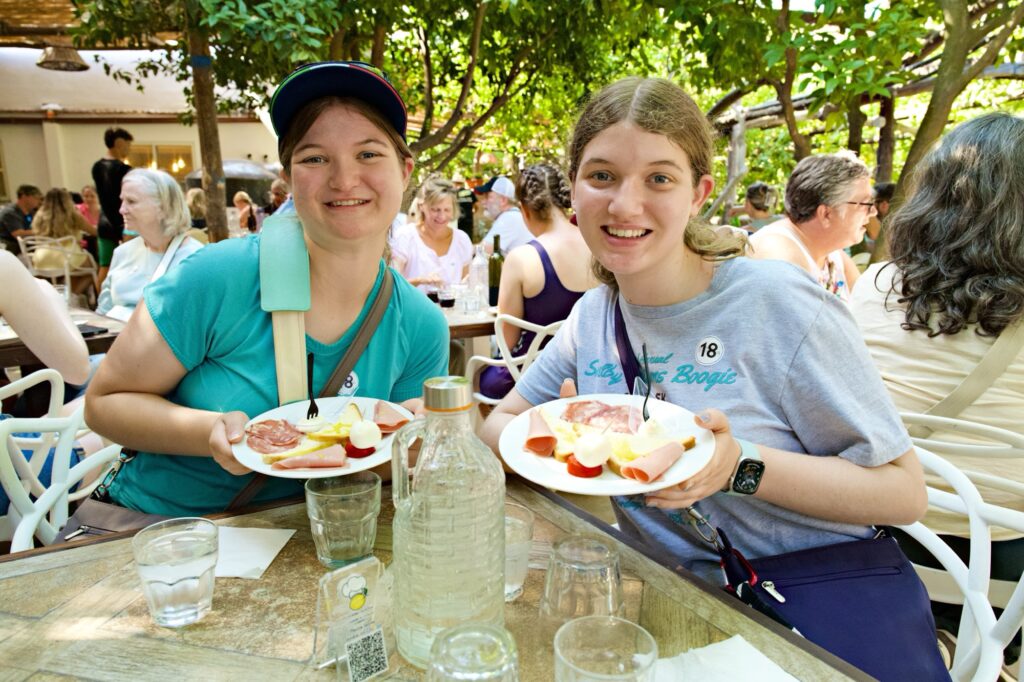
Once the demonstration was over, we were each served a plate with fresh mozzarella, ricotta, salami, and toast. I’m actually not a big fan of mozzarella by itself (LOVE it on pizza), but everything else was really good.
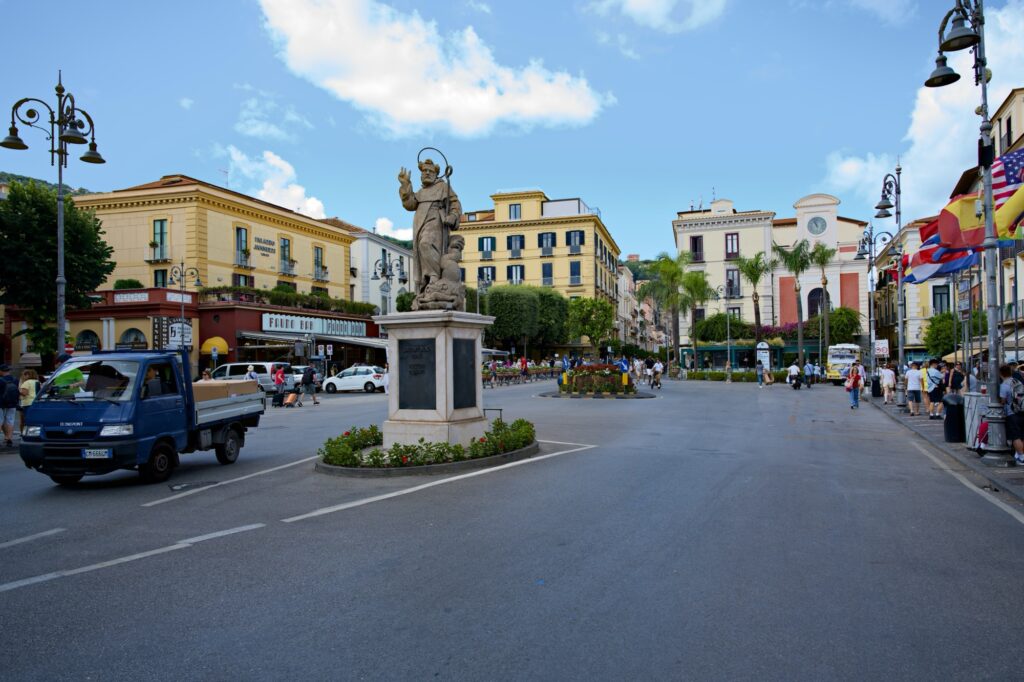
Next Valentina led us through the streets of Sorrento, which is a charming little town. We walked through the Piazza T. Tasso, which is the city center, and made a quick stop at an inlaid wood furniture factory for another quick demonstration on how this is made.
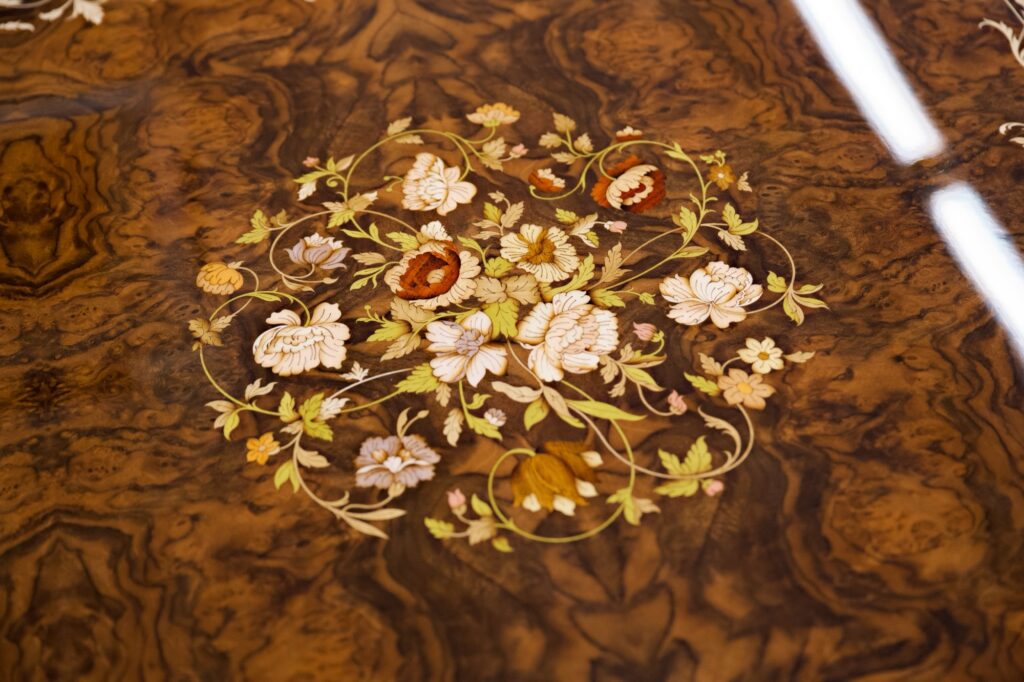
The inlaid wood furniture is absolutely beautiful, like a work of art, but it is so very expensive due to the labor and artistry required to complete a piece. I looked at a small lamp stand which was 800 Euros. A chess set that I really liked was 2,700 Euros.
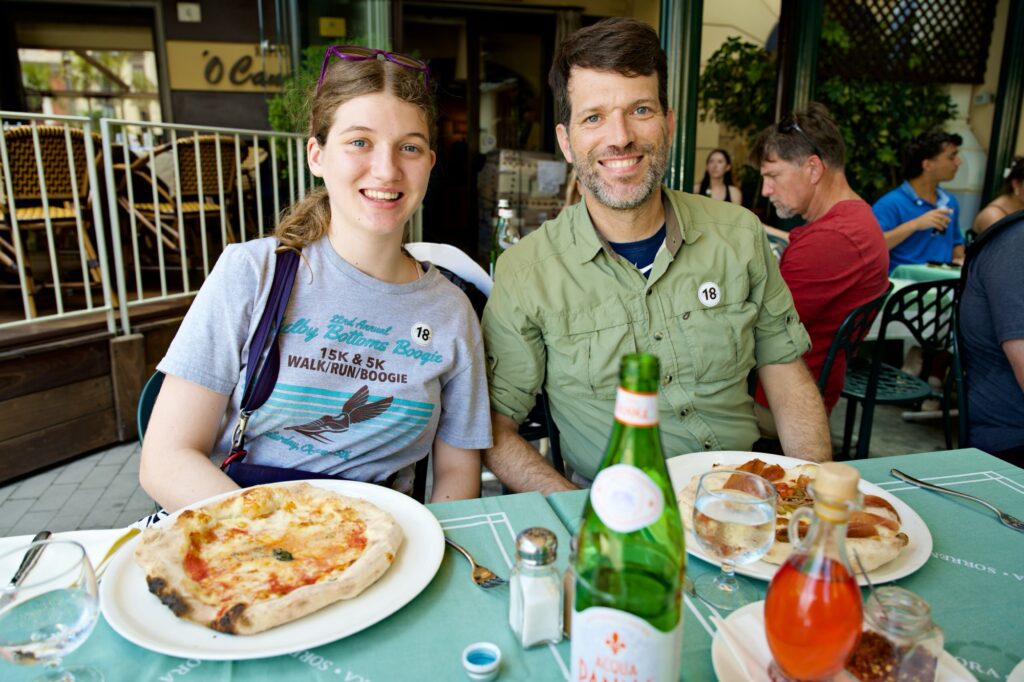
After this, Valentina turned us loose for some free time, and we decided to grab some lunch. Sorrento is known for their pizza, so we went to Pizzeria Aurora in the Piazza T. Tasso. Olivia and Kate had cheese and salami, Sara had four cheese, and I had parm ham, mushroom, peppers, and cherry tomatoes, which was known as the Aurora 1. It was delicious!
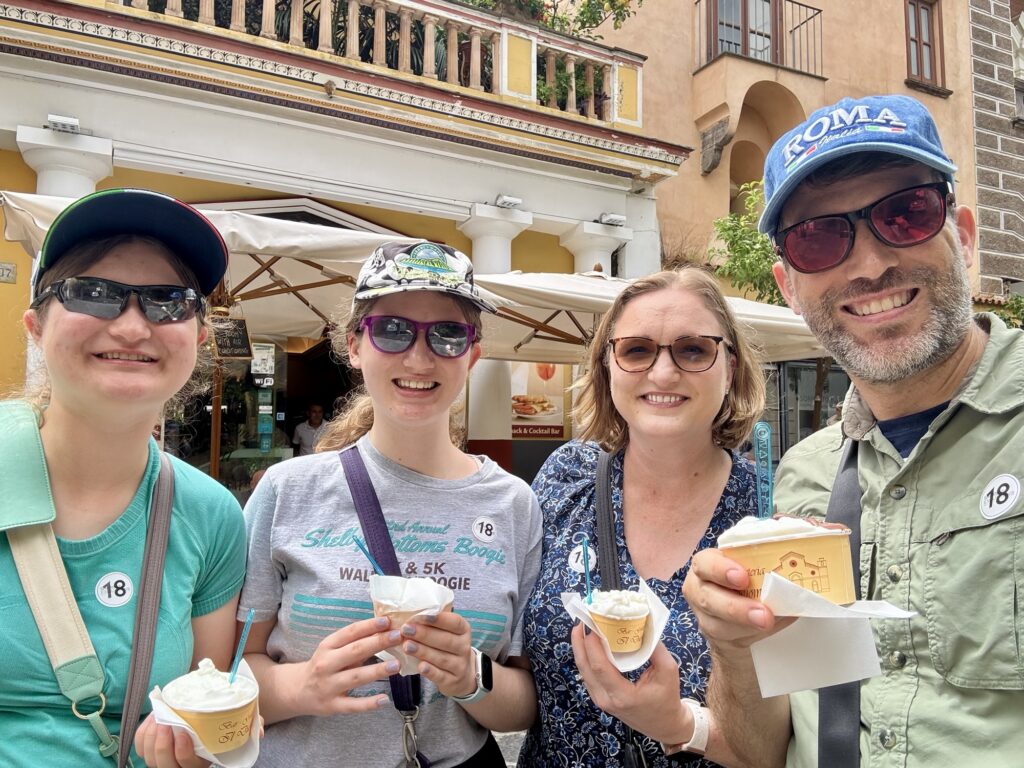
Since Sorrento is also know for lemons, after lunch we walked further into town to get some lemon (lemone) gelato for dessert (I actually got chocolate and lemon). It ended up being one of the best gelatos we had in Italy.
Next we did a little shopping. I went to a leather shop and bought a black buffalo leather belt. Italy is know for their quality leather, and the prices are much better than what we can get in the states.
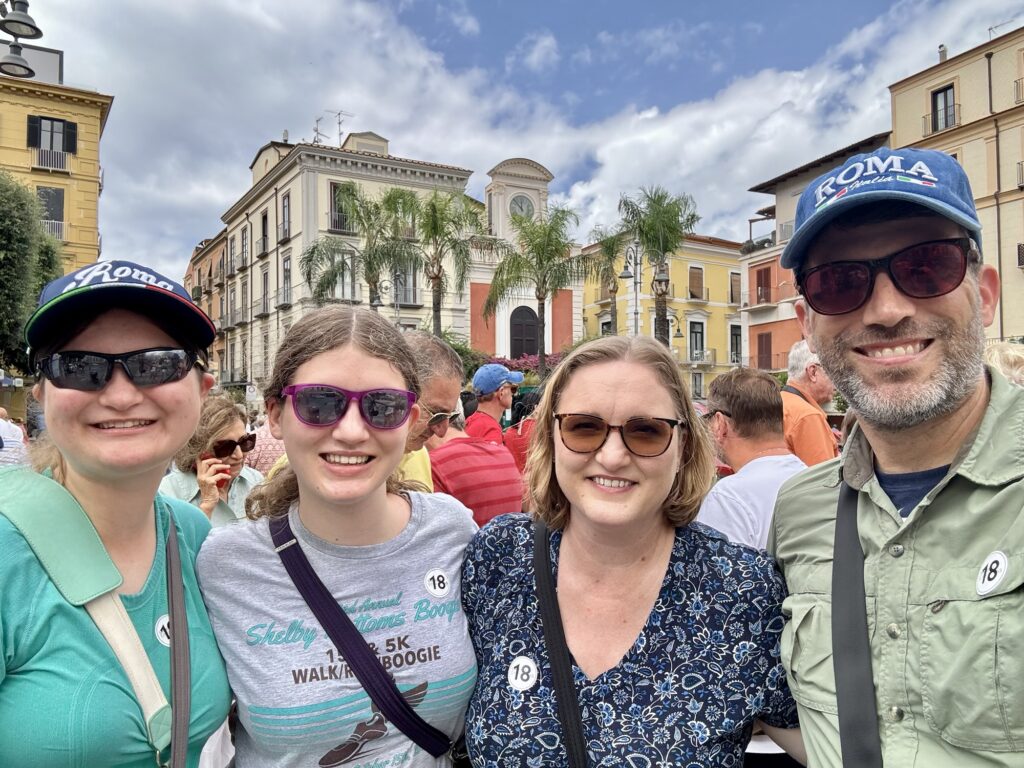
Once our free-time was over, we met back up with Valentina and boarded the bus. Sorrento is a great little town! We all loved it. On the bus, It took about an hour to make it back to Pompeii, and the ride was pretty chill.
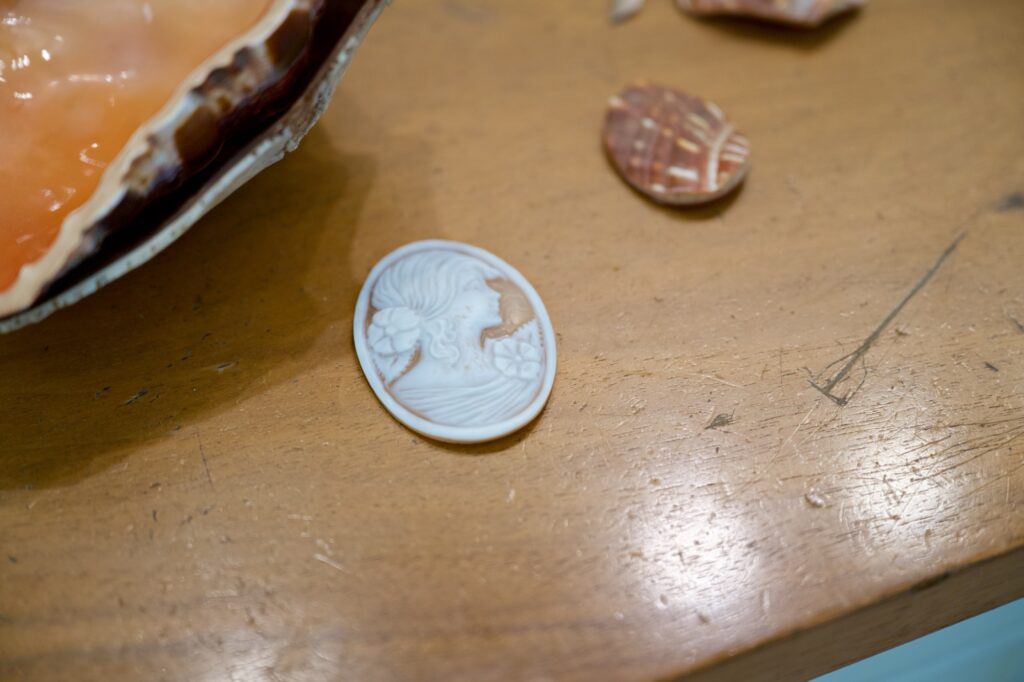
Outside the ruins, we made another brief stop at Cellini Coralli & Cammei factor to see a demonstration on how cameos are made. The cameos are beautiful, but I’m pretty sure both this and the inlaid wood demonstration were so the group could have access to their bathrooms. Public bathrooms in Europe cost money to use, so this is a win-win for the tour company and the factories who get a large group of potential customers.
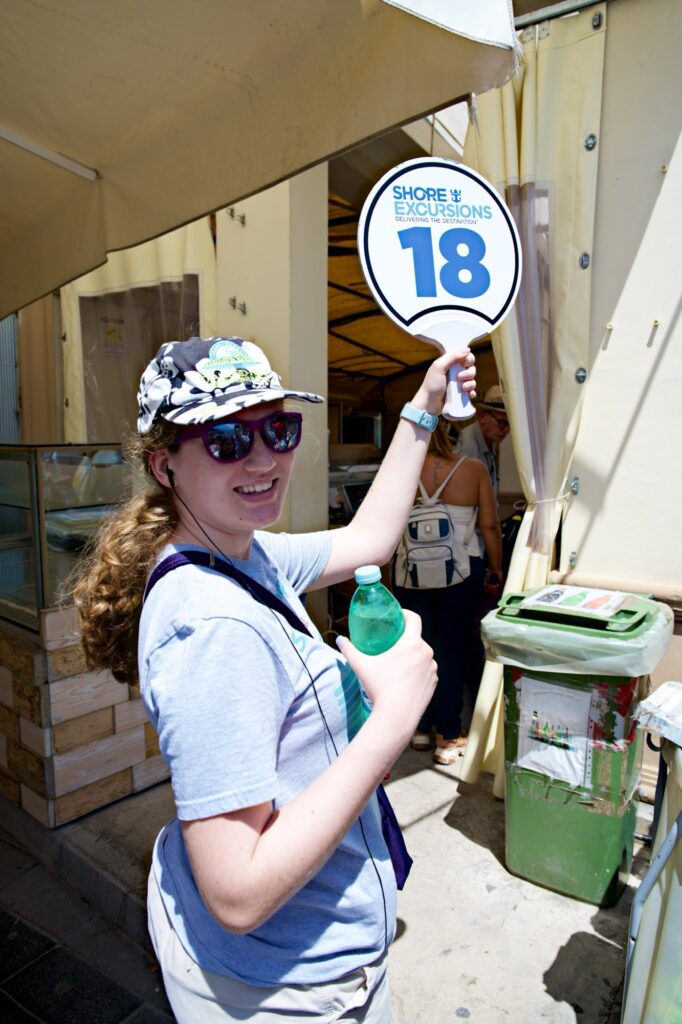
At the meetup spot, Sara got the be the “guide” and hold the group sign for a few minutes while Valentina was attending to other matters. Once inside the ruins, Valentina began to tell us about the city of Pompeii, its destruction, and the archaeology at the site.
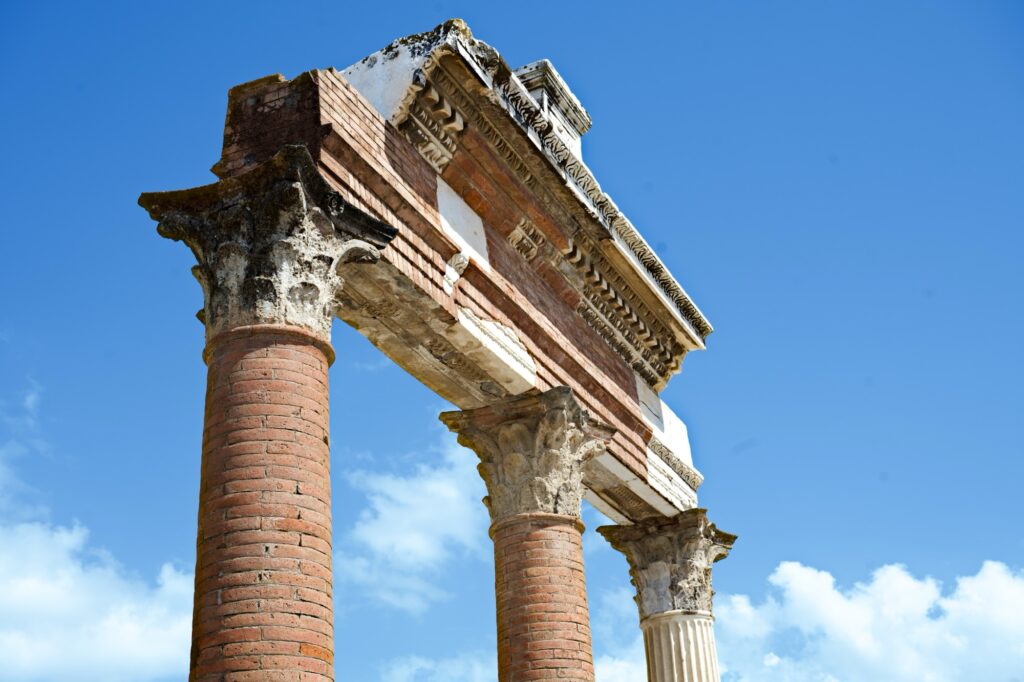
She explained that Pompeii is 66 acres in size and was NOT destroyed by lava from Vesuvius when it erupted in 79 AD. The eruption itself lasted for three days and created a large mushroom of ash and rock on top of the mountain. Strong winds pushed this debris from the top of the mountain toward Pompeii covering it in 20 feet of volcanic ash and pumice. This came in waves, which is why Pompeii is so well preserved. As each layer came on top of the city, it hardened and formed a protective shield.
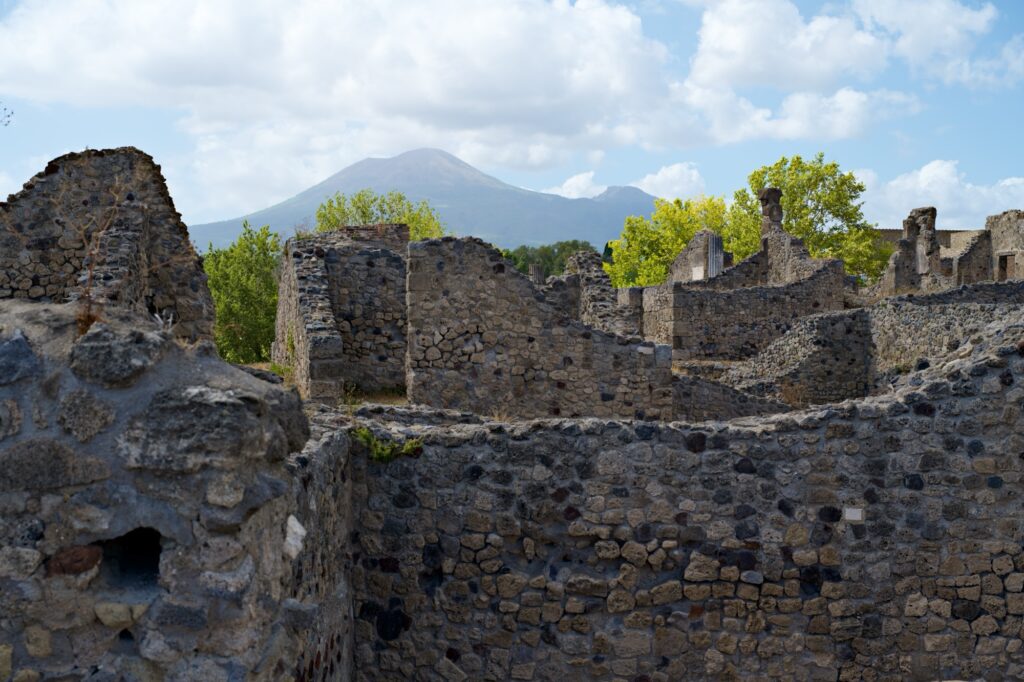
It is unknown exactly how many people died in Pompeii. At its height in the Roman Empire, it had a population of over 20,000 people. However, an earthquake in 62 AD drove many away from Pompeii, so the precise population at the time of the eruption is not known.
Our first stop on the tour was the quadriportico dei teatri. This area was shaped like a square with columned porches (porticos) around the outside. It is believed this was an area for gladiator training with spectators on the outside. There are very few roofs remaining in Pompeii (the one at this site is a reconstruction). This is because all of the roofs were flat, and they collapsed under the weight of the ash and rock. Valentina also explained that only the items made out of rock survived the eruption. Everything organic was destroyed (people, wood, cloth, etc).
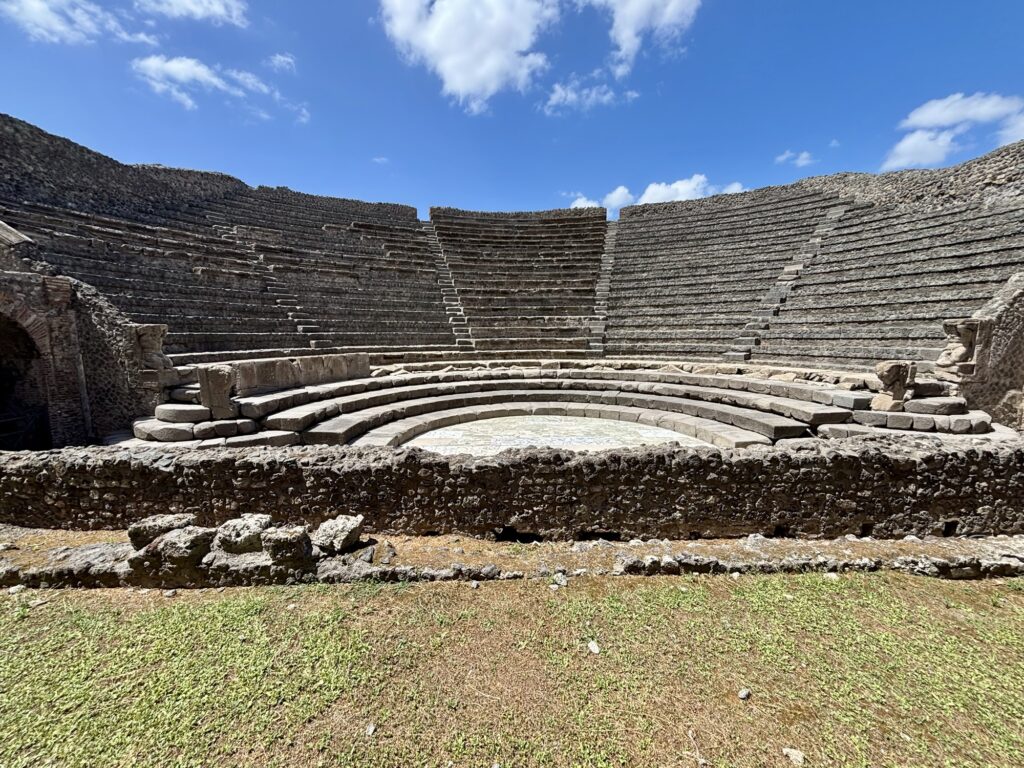
Next we saw a small theater (semi-circle). She explained that many performances in the theaters of Pompeii were tragedies where all of the actors were men wearing masks, who would change their voices if they were playing a female.
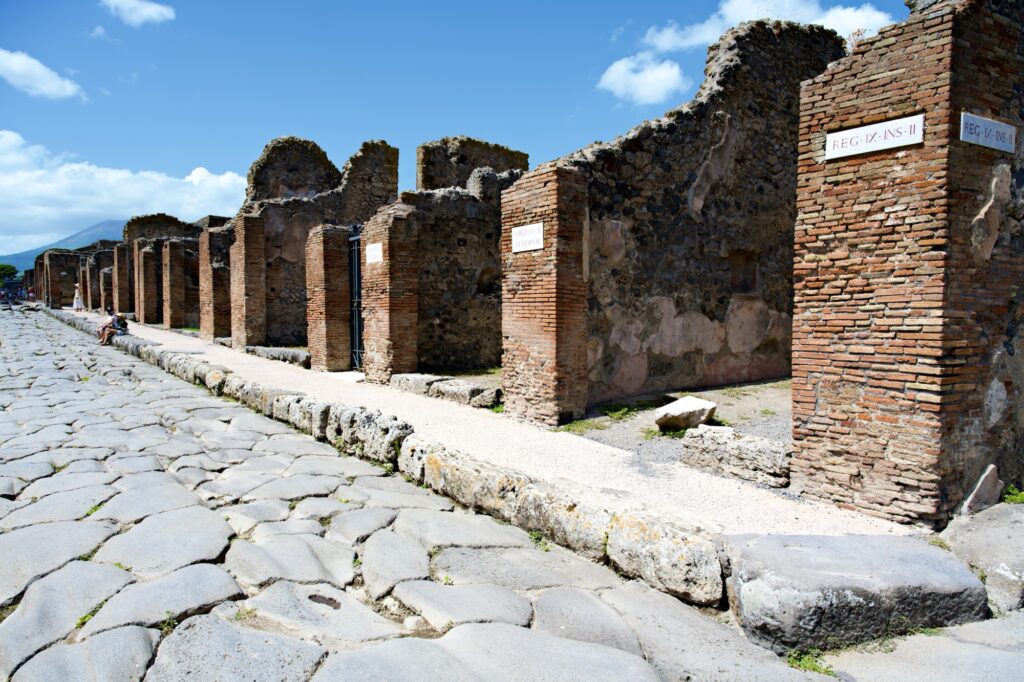
We then went to a city street that was lined with shops. These shops contained bakeries, restaurants, markets, etc.
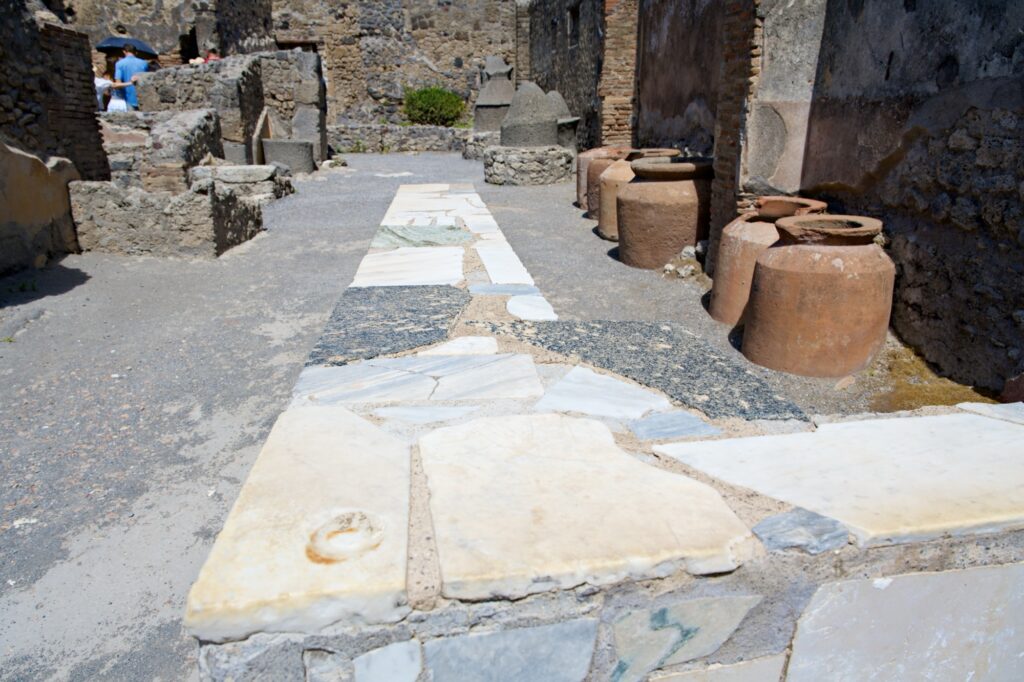
She showed us one example of a bakery with a counter that had a slot for a coin to see if you have the right coin to buy bread.
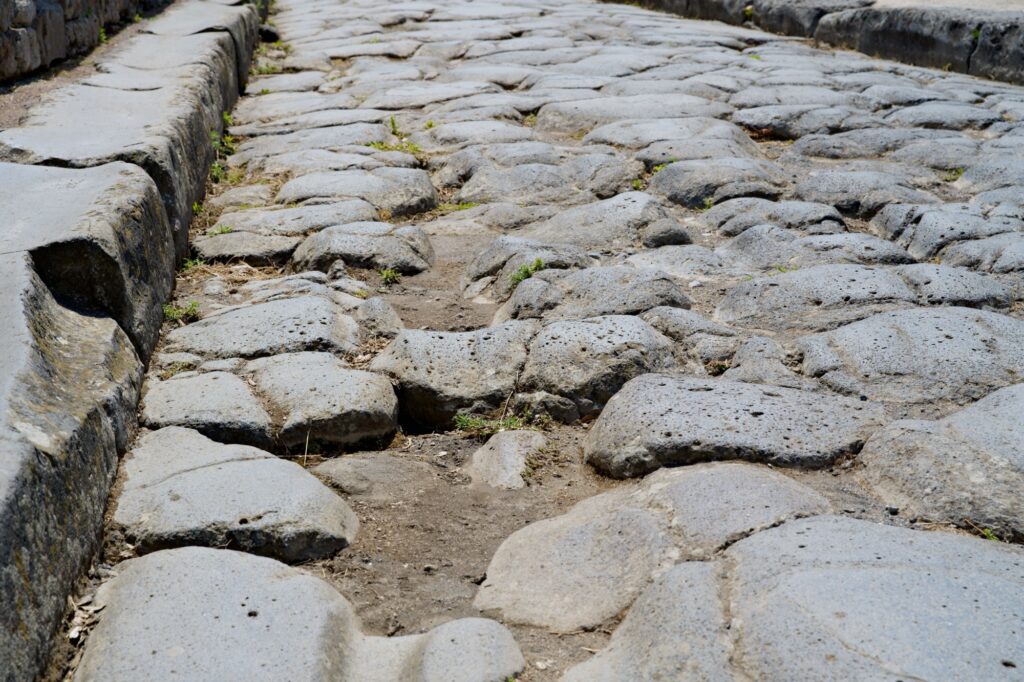
The streets in Pompeii are rock, and you can clearly see the grooves in them from chariots. We’ve seen this in other Roman cities that we’ve visited in Israel. We even saw this earlier on this trip in the Roman Forum.
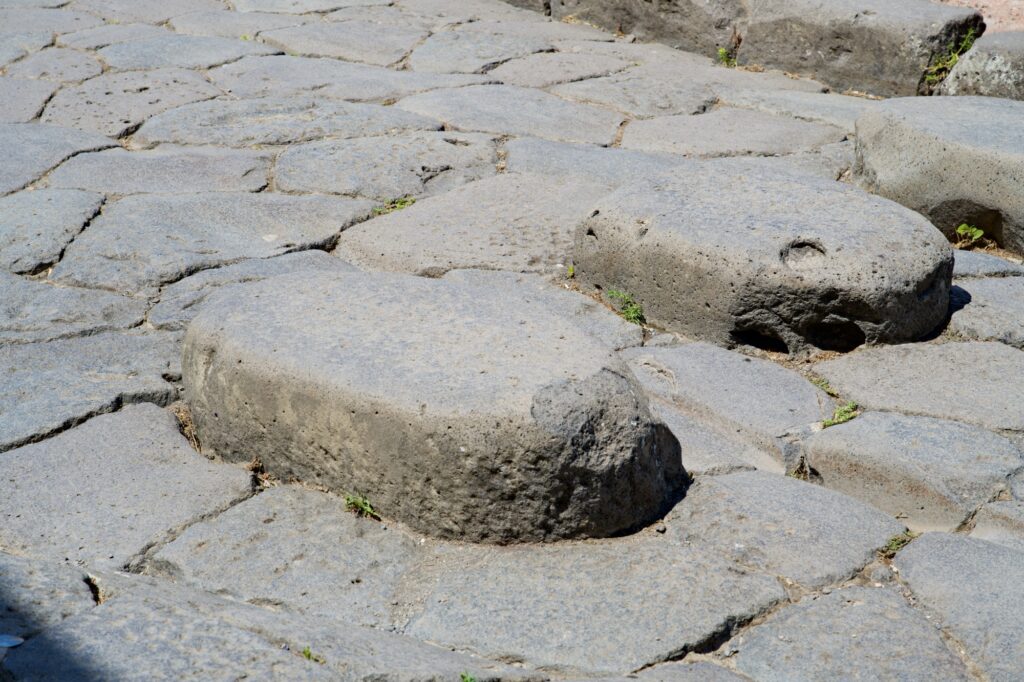
In the middle of the streets are stepping stones. Valentina said the reason for this was because raw sewage flowed through the streets. Not an appetizing thought.
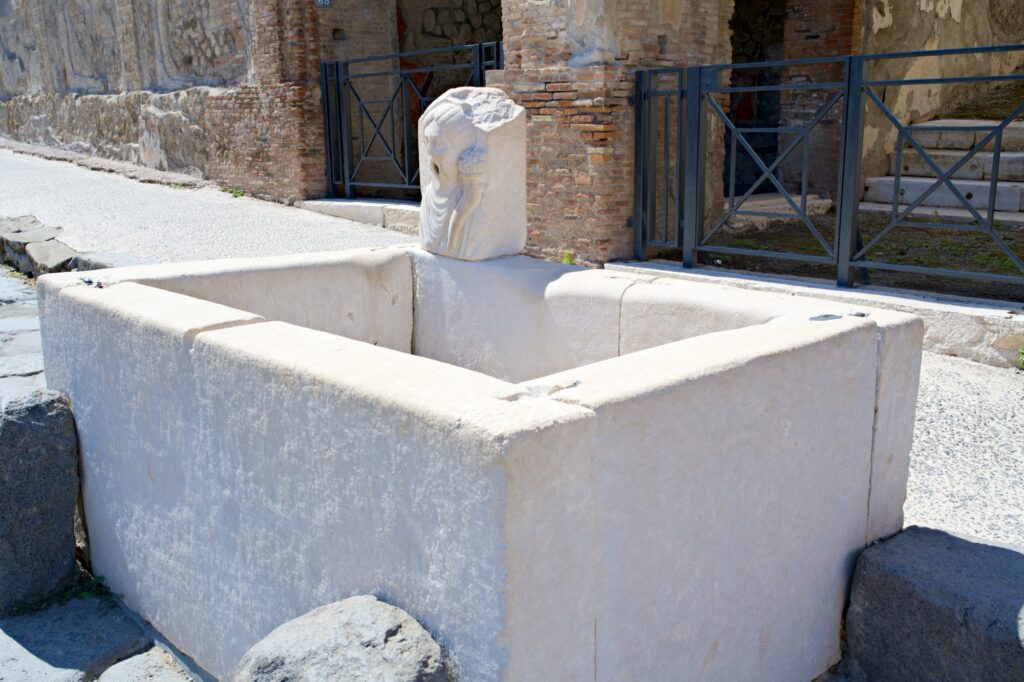
Another feature of the streets of Pompeii were public water fountains that ran 24-hours per day (reminds me or Rome). Each of these fountains had a different design at the top which was used as a point of reference in the city. 49 different designs have been uncovered so far.
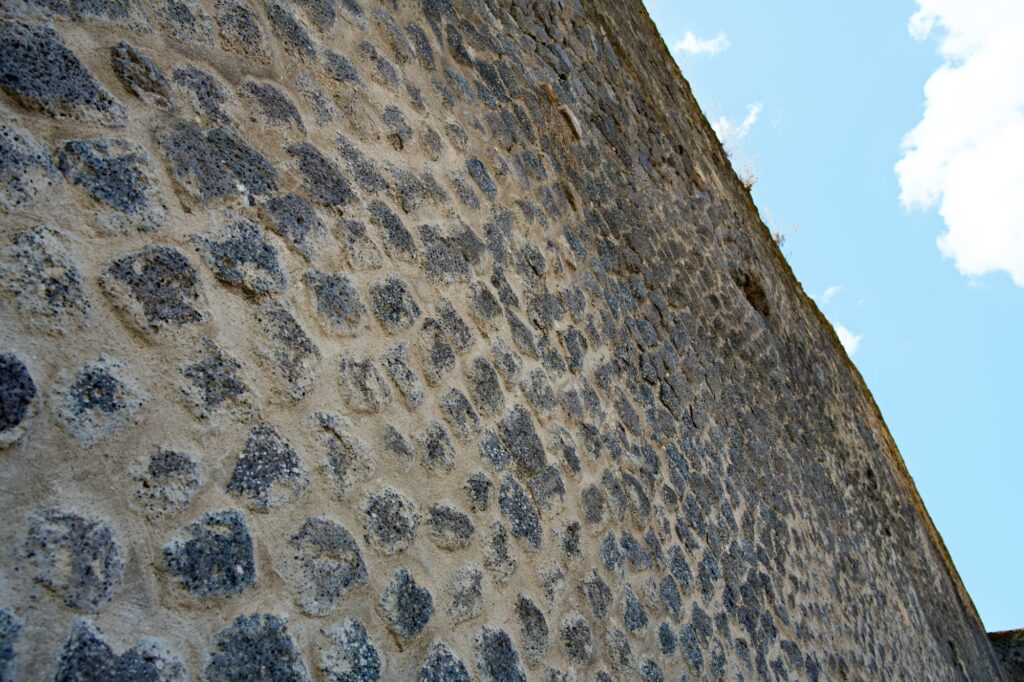
While walking down this first street, Valentina pointed out at 10 different types of rock were used in the construction of Pompeii. She also explained that even though the sea is two kilometers away, Pompeii was a harbor town before its destruction. Because it this, it was a commercial city.
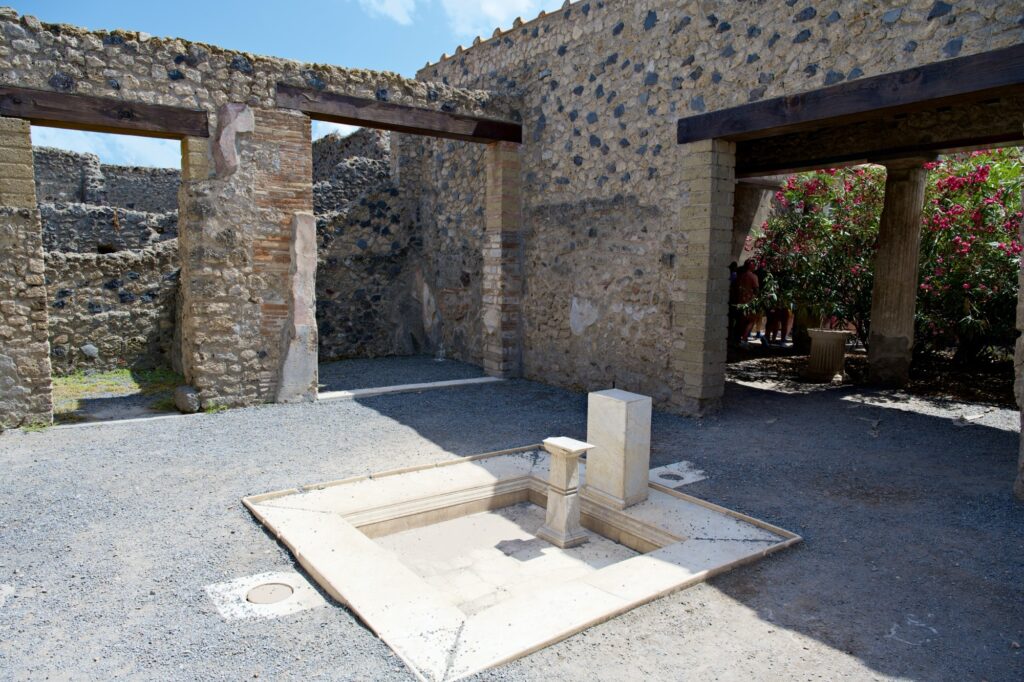
Our next stop was a very large home called Casa di Sirico. In this home, Valentina showed us two large marble wells that were used in the home to collect rainwater. She said that eels were placed in the water for purification.
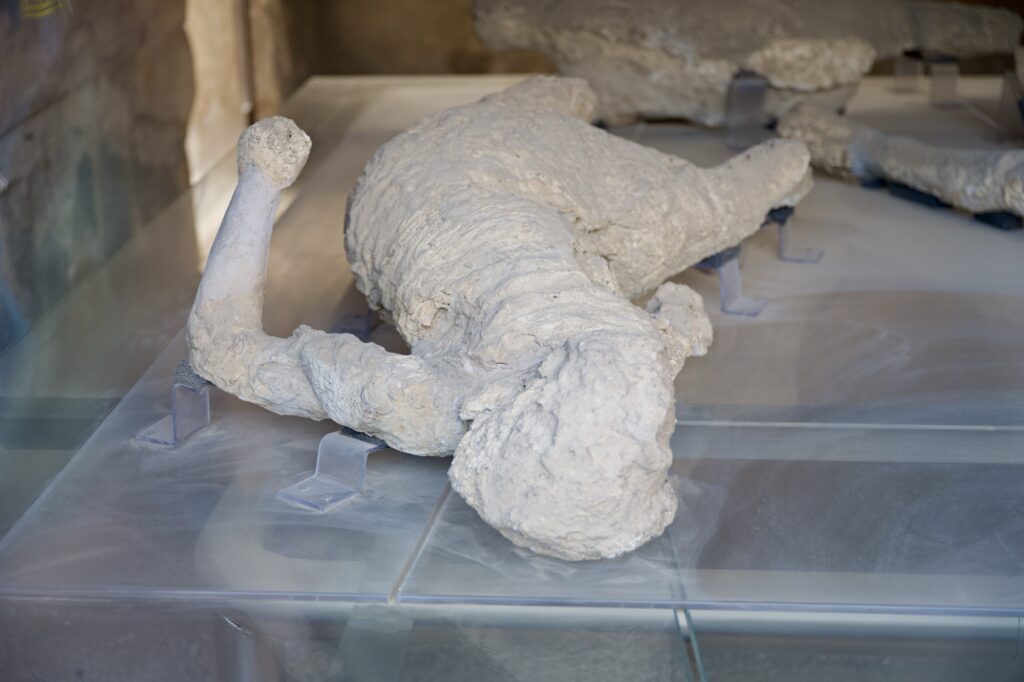
It was in this home that we saw preserved bodies. These are not mummies but are actually plaster. As the ash and rock covered Pompeii, it quickly hardened around every object. When the bodies decomposed, it left a hollow space. Archaeologists filled these hollow spaces with plaster and other materials to create molds of some of the bodies. In some cases, this was done centuries ago, so the molds are not terribly precise. This same technique was also used for other organic materials like furniture.
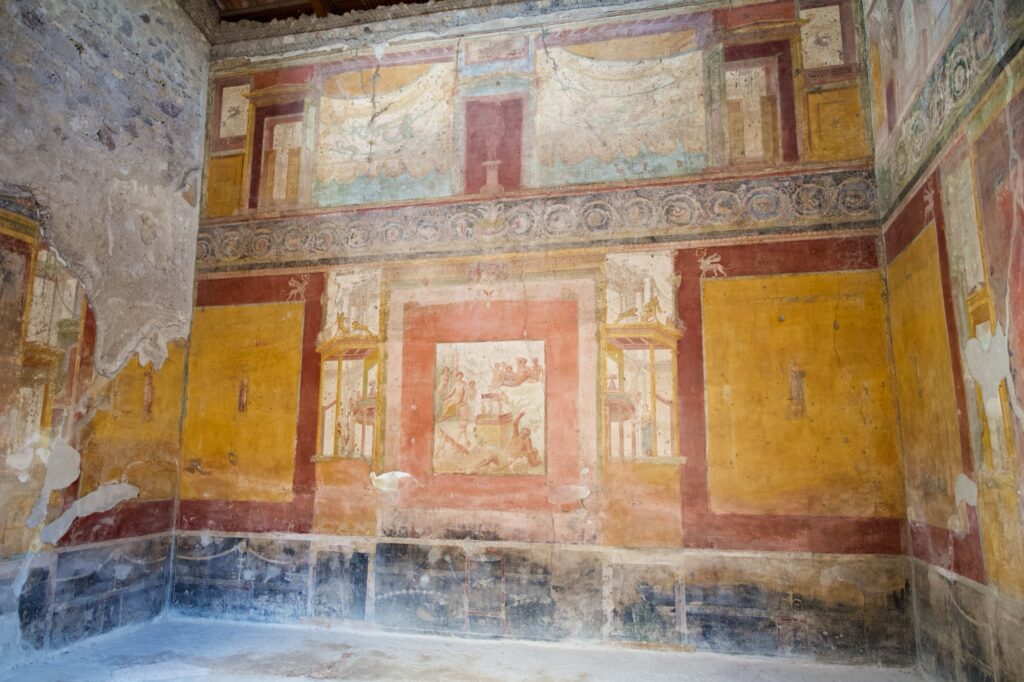
In the Casa di Sirico, we also saw a room with walls still partially covered with painted frescas in different colors.
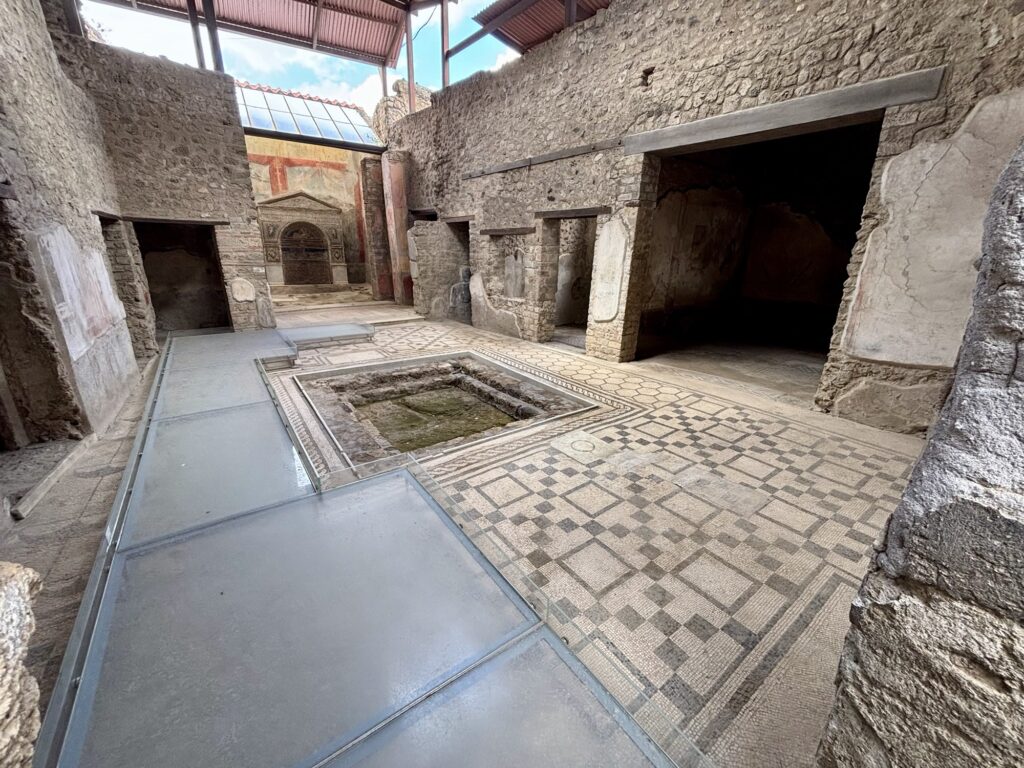
In another street we went to Casa dell’Orso, which was another very large house with a beautiful mosaic floor. Valentina said that most of the pieces used to make the mosaic were glass.
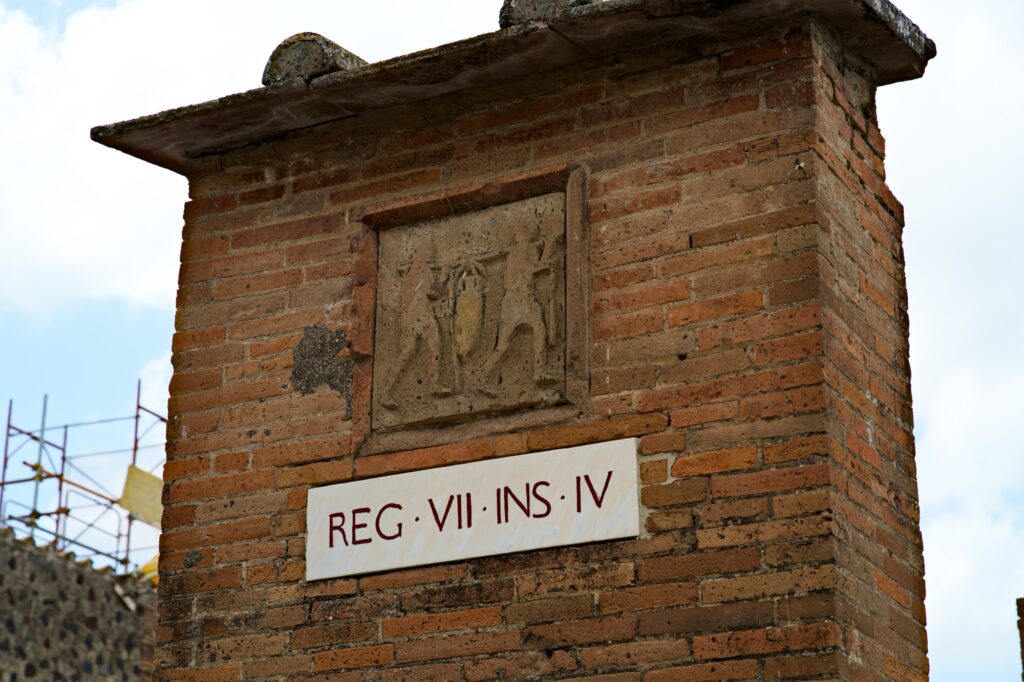
Further up this street was a sign indicating that we were entering a public area. This mean that no chariots or riding animals were allowed.
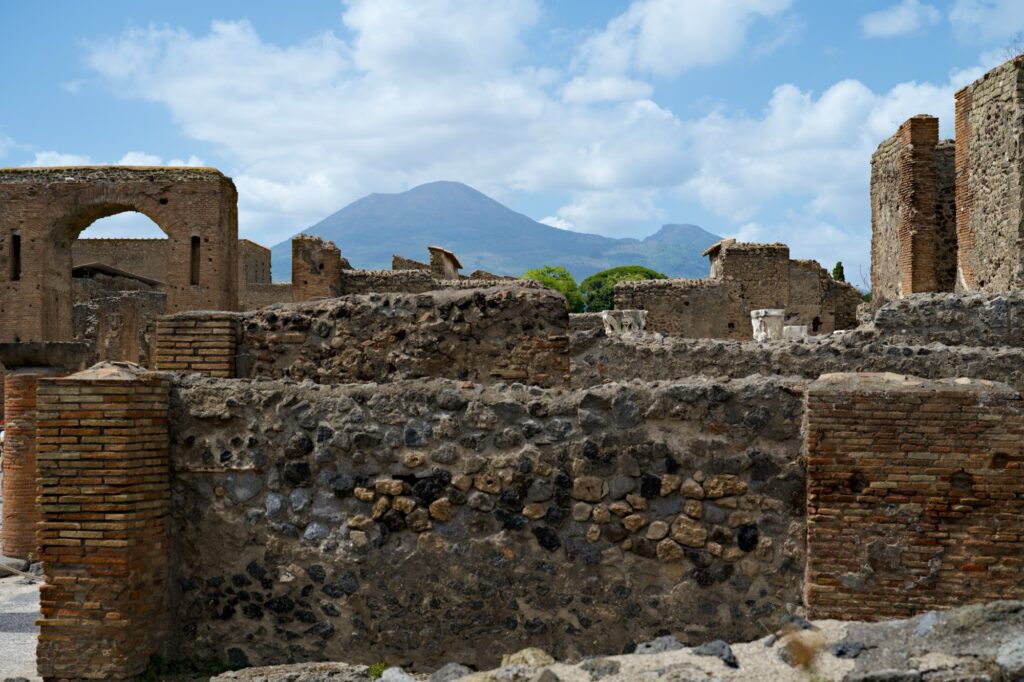
Once we entered this public area, we were able see Mount Vesuvius in the distance.
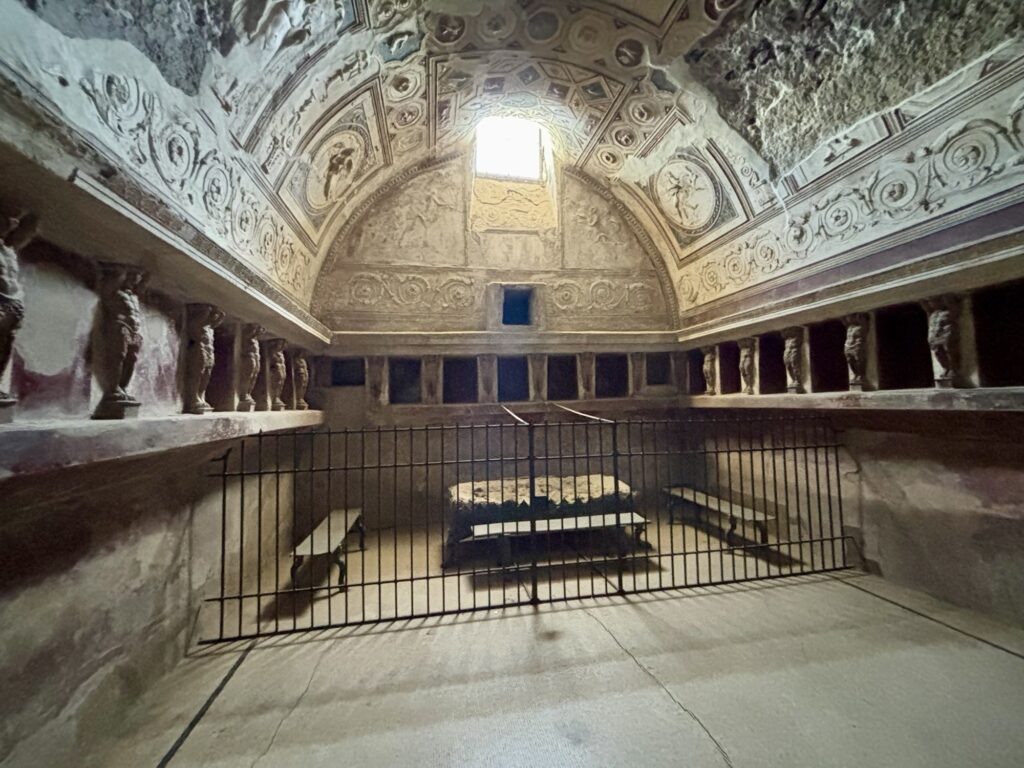
Our next stop was Terme dei Foro (thermal bath). The construction of this was very similar to thermal baths we had see in Roman cities and palaces in Israel. We saw the cold room and the hot room with double walls.
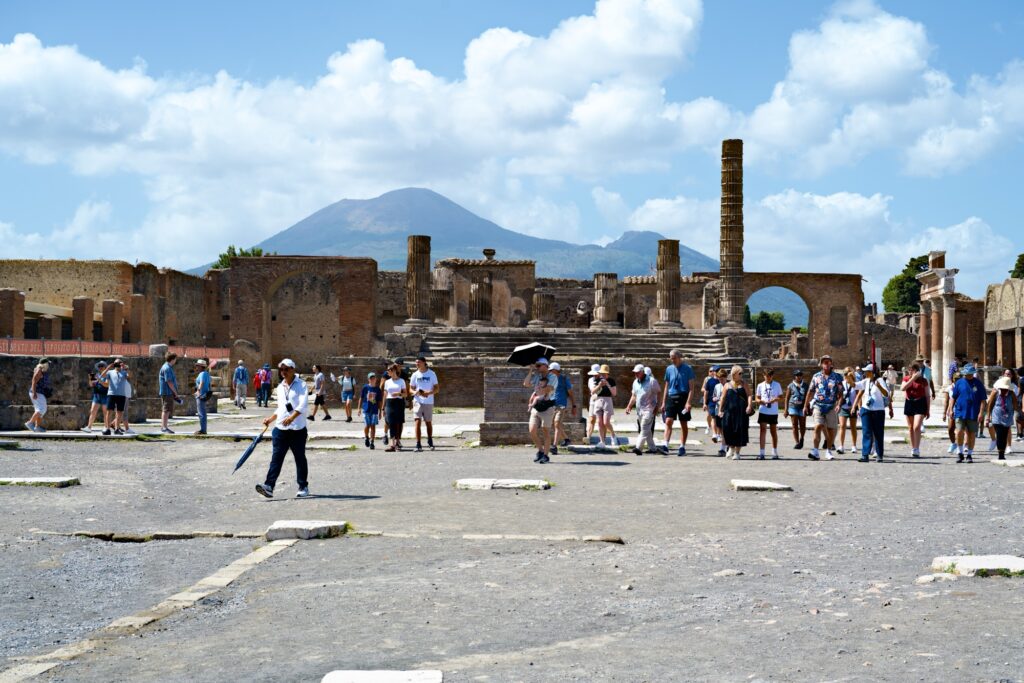
Finally we walked to the city center which gave us a great view of Mount Vesuvius and much of the ruins of Pompeii.
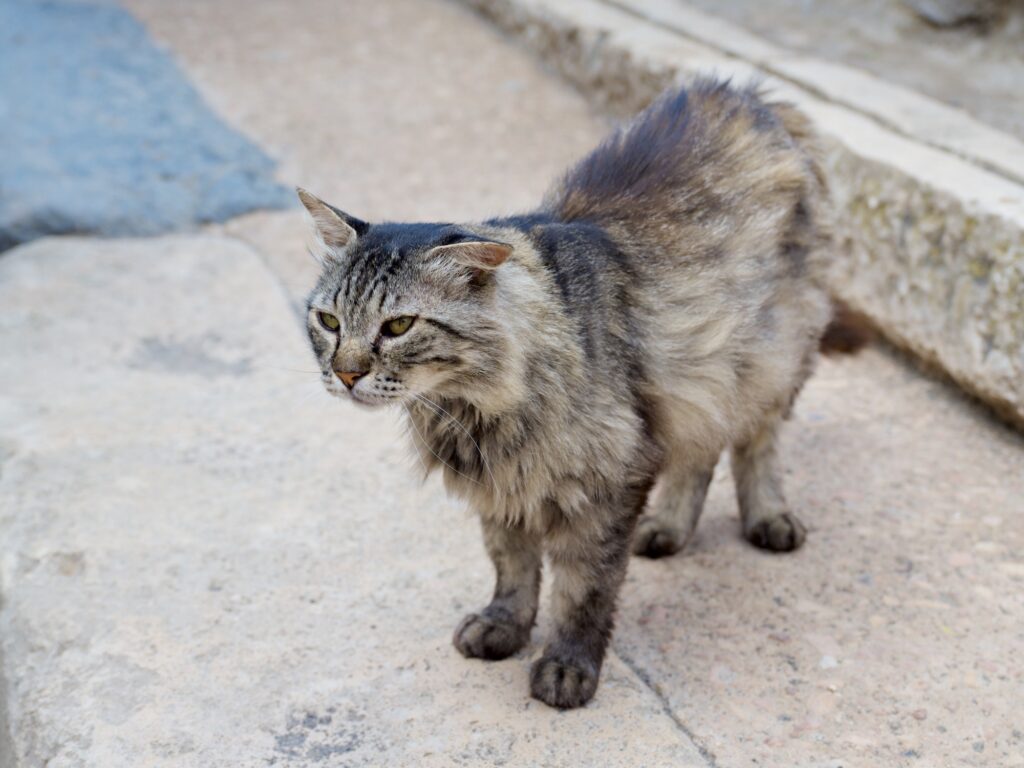
On a side note…we saw our first two feral cats of the trip in Pompeii. This first one was beautiful!
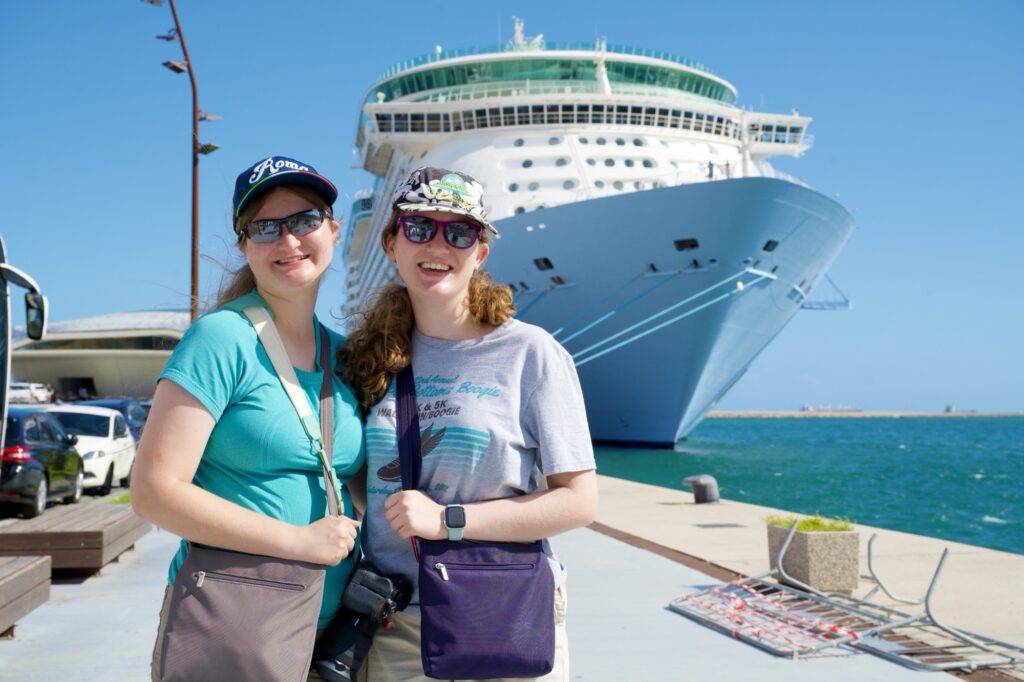
After our tour we boarded the bus for the short drive back to Salerno. We took a few pictures in the port before getting back on board the Voyager of the Seas.
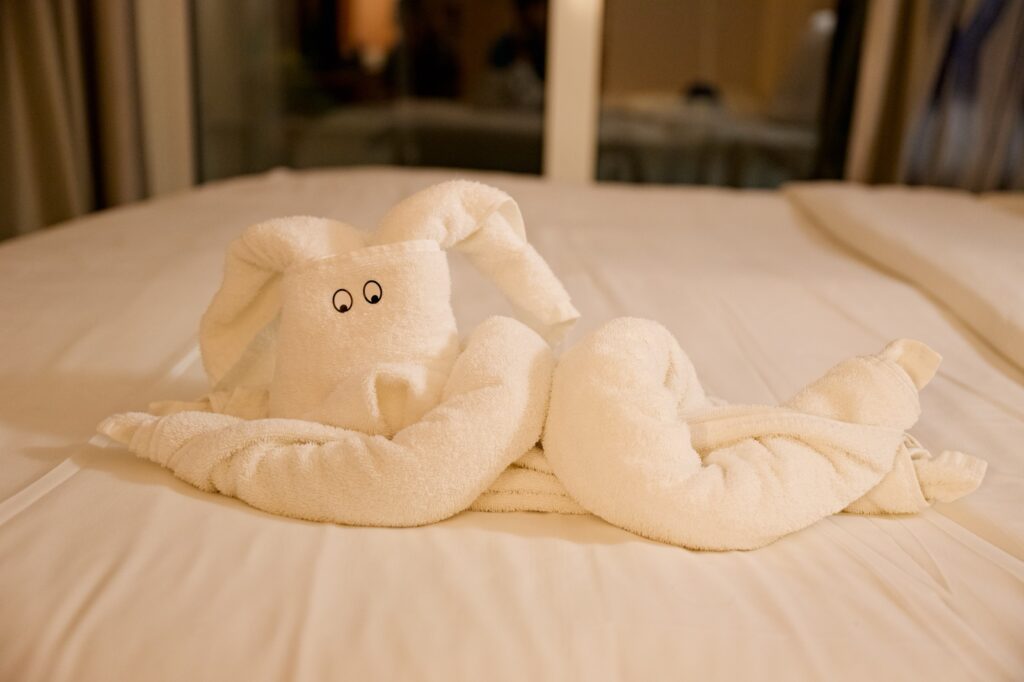
Back in our stateroom, Amron had left us our first towel animal of the cruise. It was impressive, but we’re not really sure what it was.
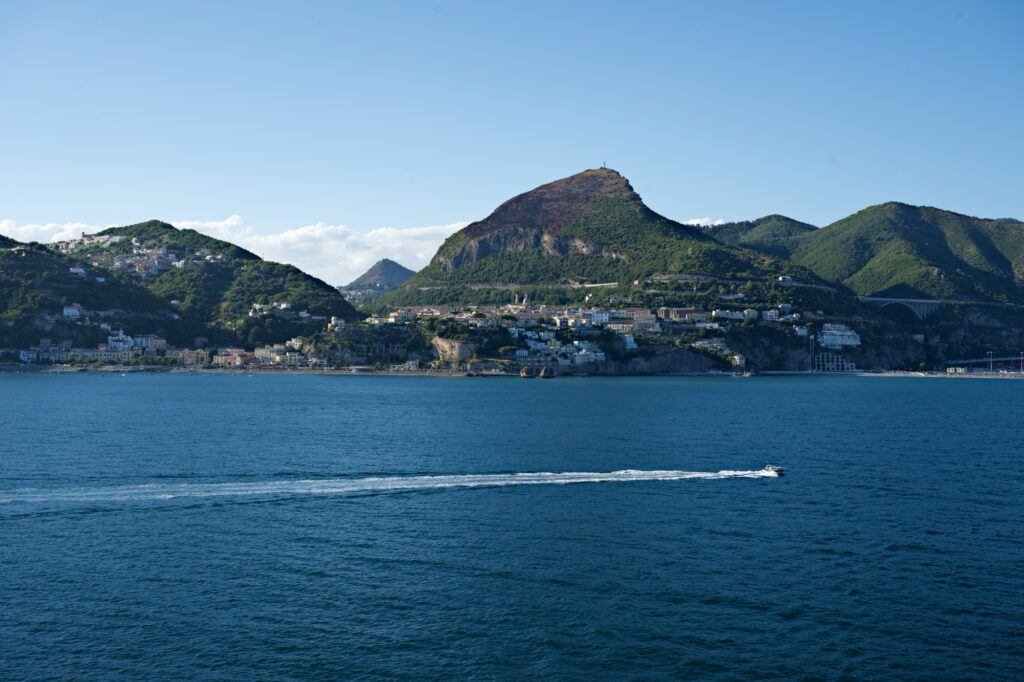
While the girls were getting ready for dinner, I went up to deck 12 to get some shots of the beautiful Amalfi Coast as the ship sailed out of port.
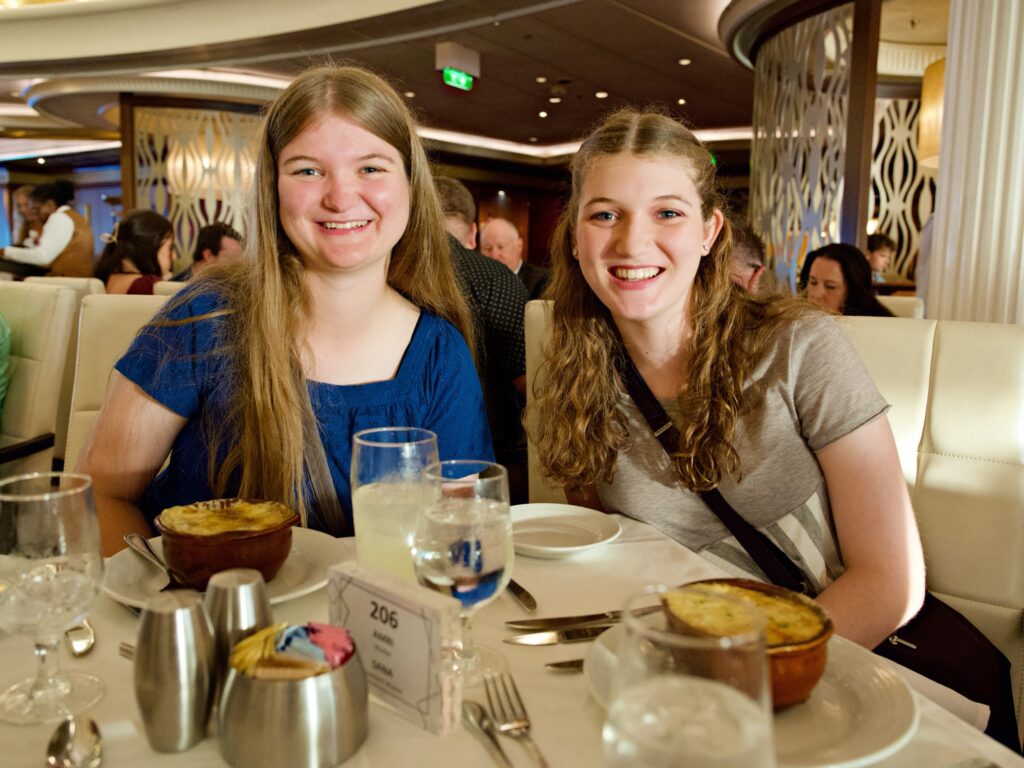
Once all of us had cleaned up, we went to the Main Dining Room for dinner. We were not able to sit at Raj’s table, so we ended up with Amri from Indonesia as our waiter and Sana from Gambia as our assistant waiter.
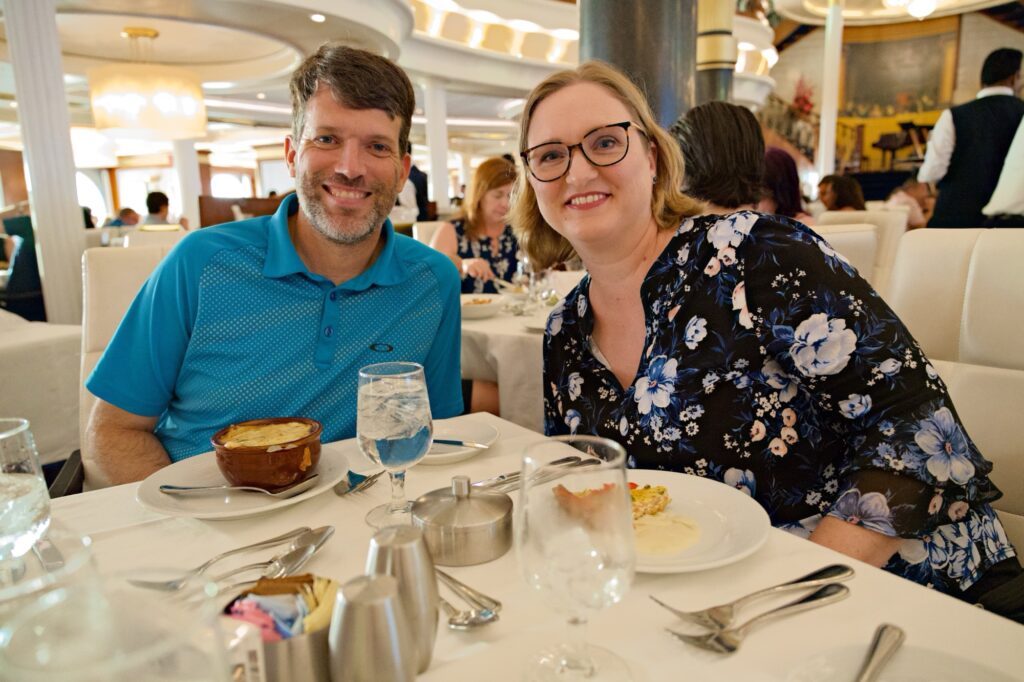
Dinner was delicious with caesar salad, french onion soup, jumbo shrimp, and warm chocolate cake with ice cream for dessert.
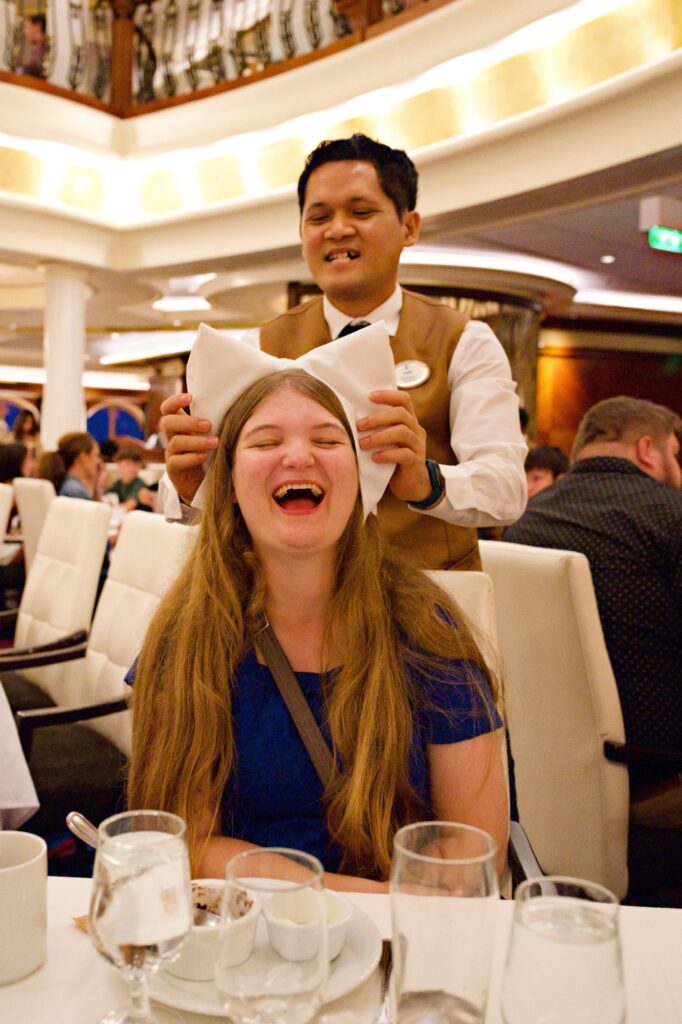
At the end of dinner, Amri showed Kate and Sara how to fold a napkin into a rose (Sara already knew how), and then he used the napkin to make cat’s ears for Kate.
After dinner we went to the room for a bit and then to Royal Theater for the show Broadway Rhythm & Rhyme.
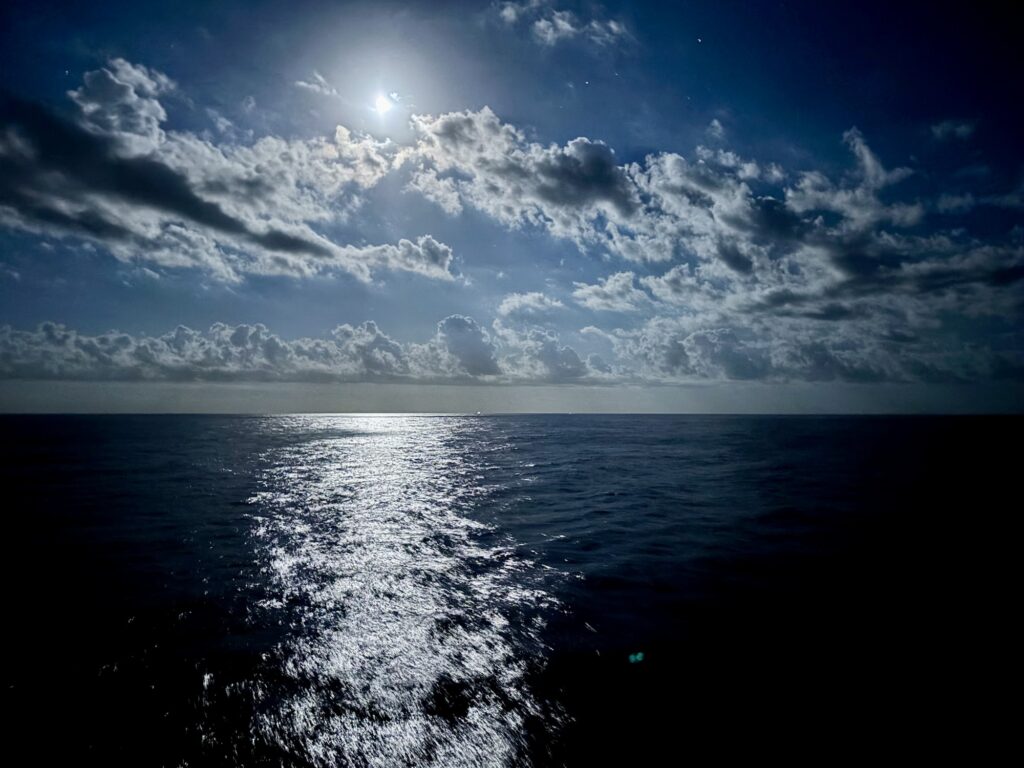
We all then went back to the room and then Kate, Sara and I walked on the promenade deck and then to the bow of the ship.
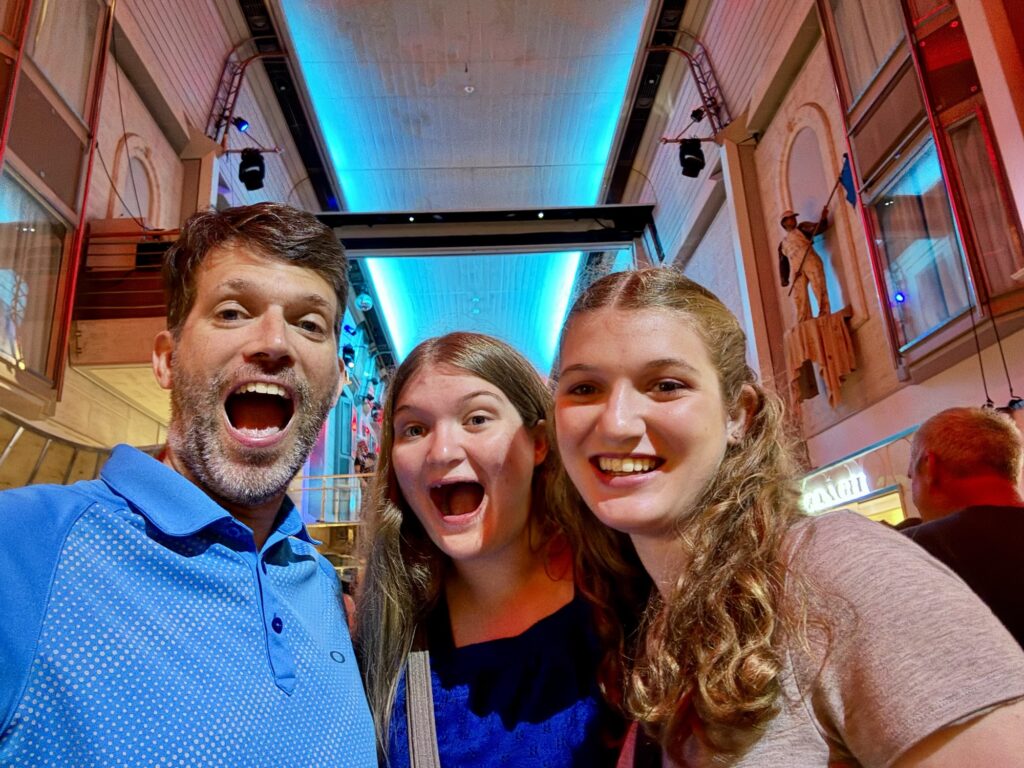
Our final activity of this day was a quick stop at the Royal Promenade for the 80s party. We sang along to a few songs, and the girls got to hear my high note during Take on Me by Ah Ha. This was another great day!
